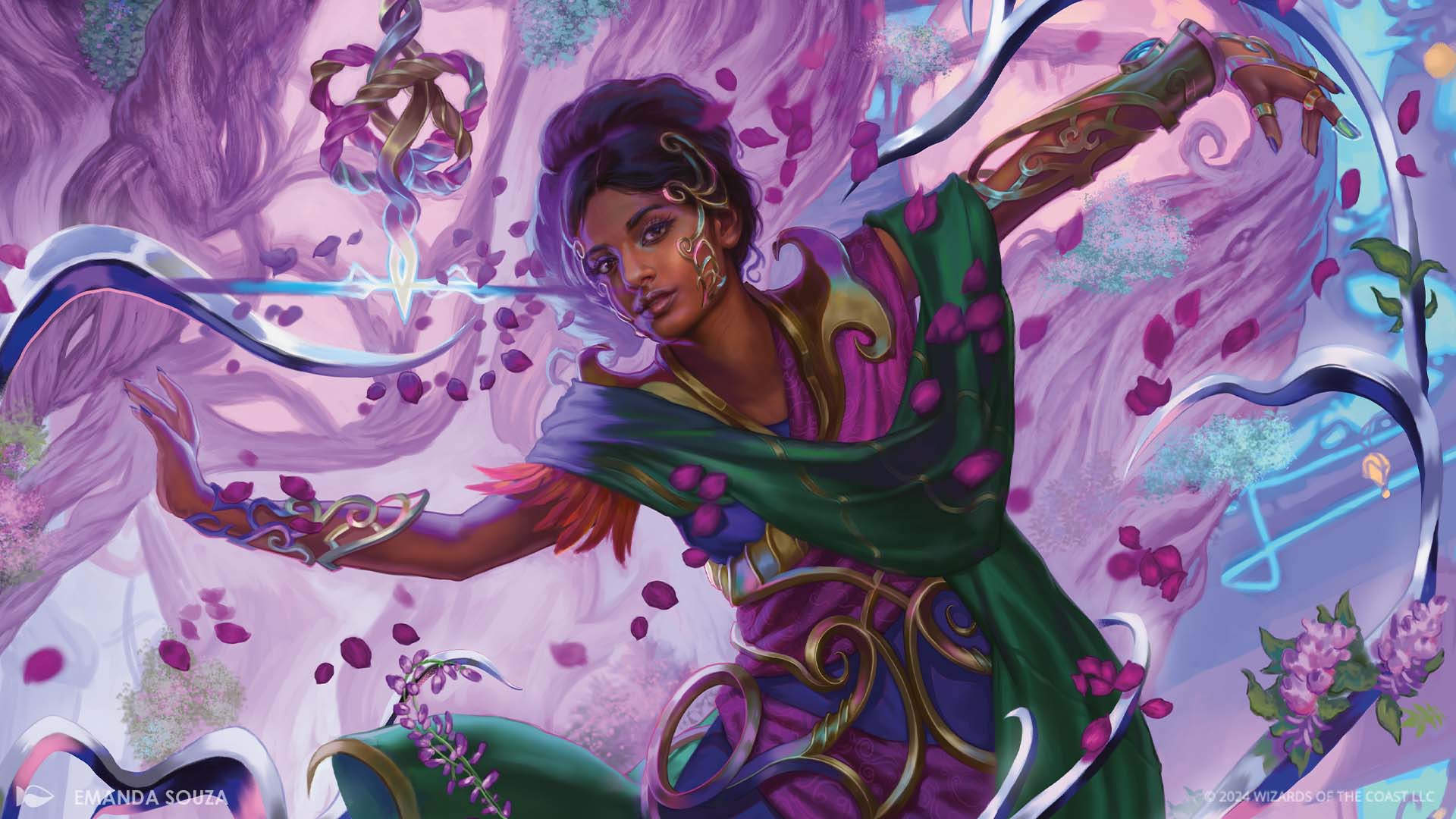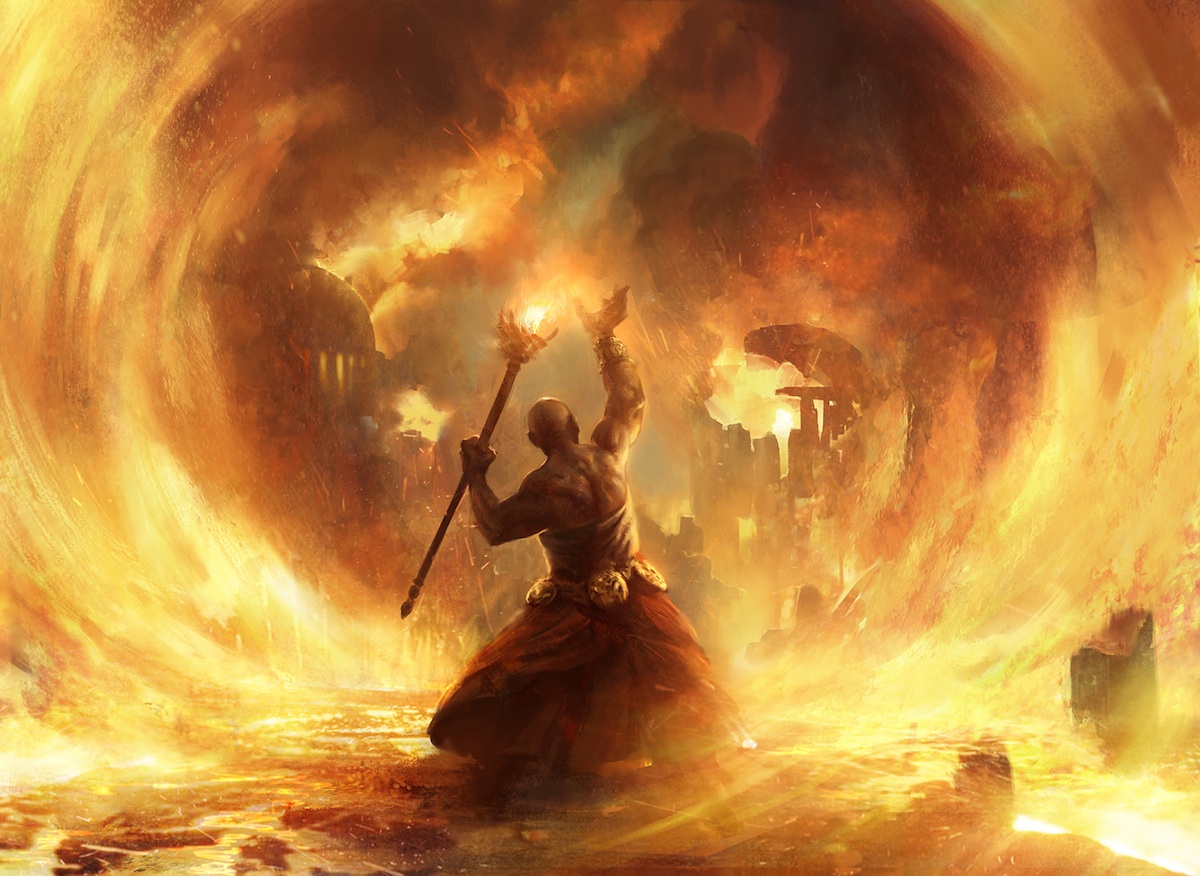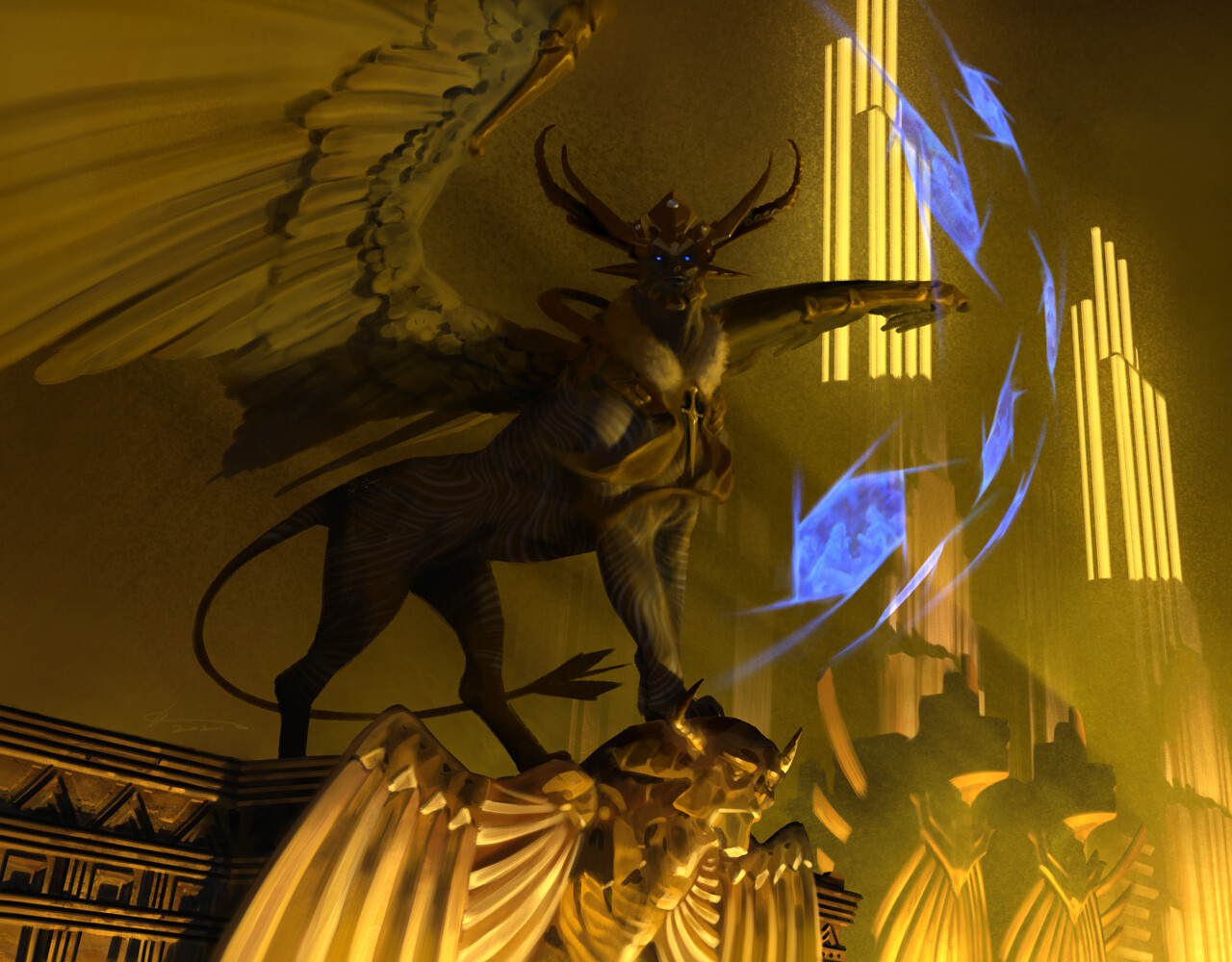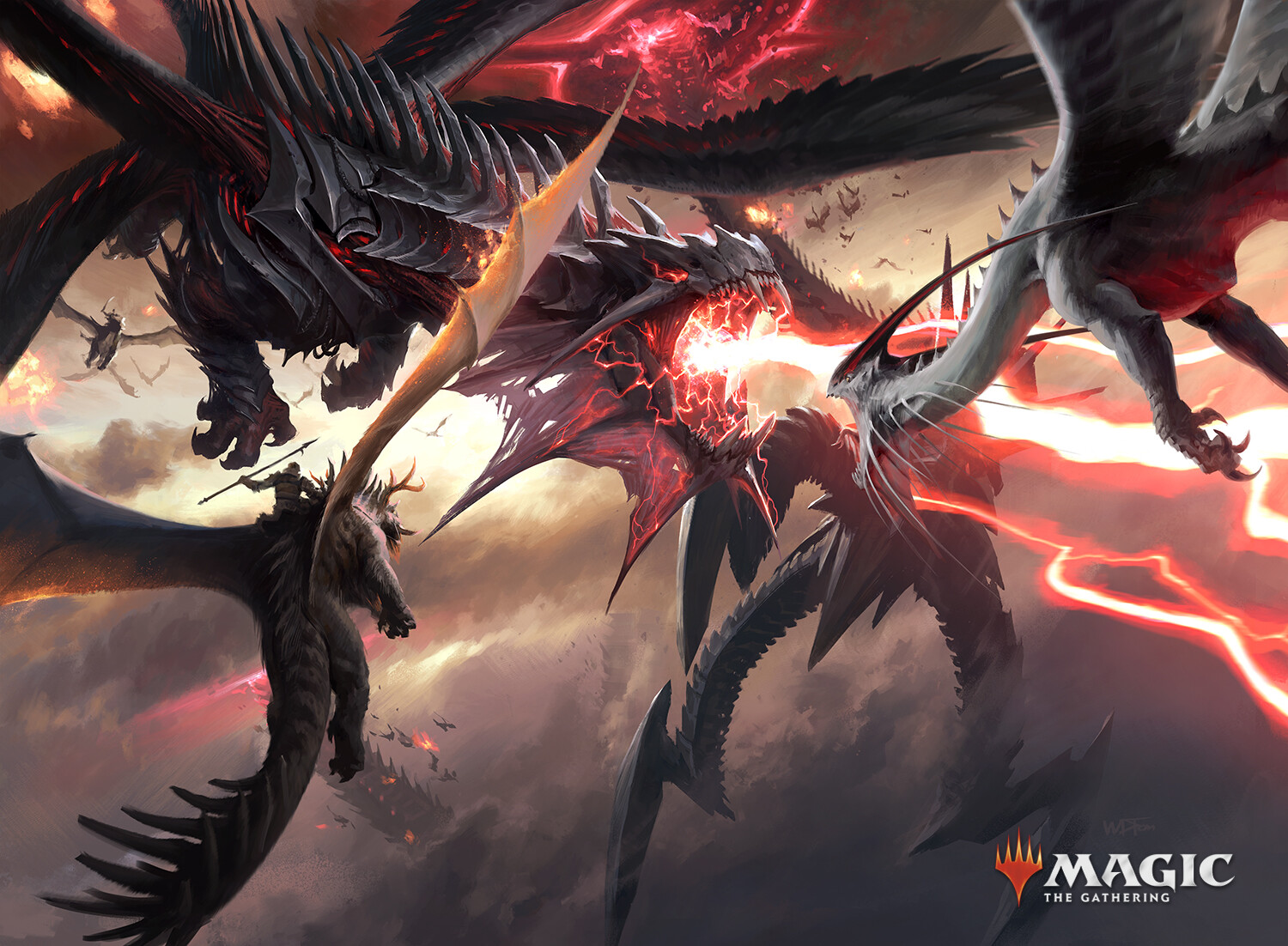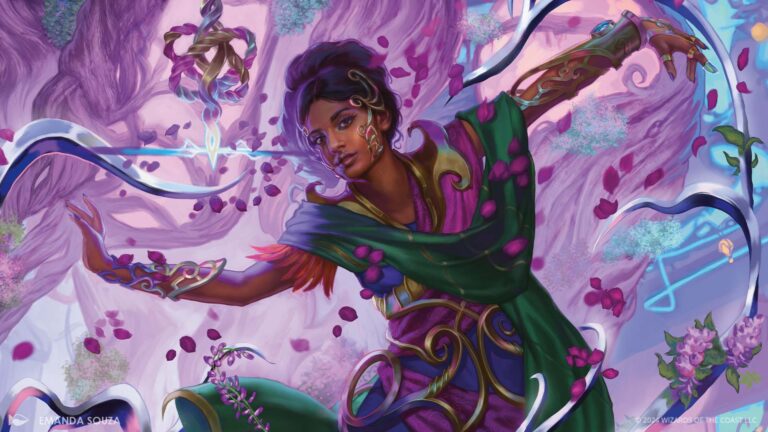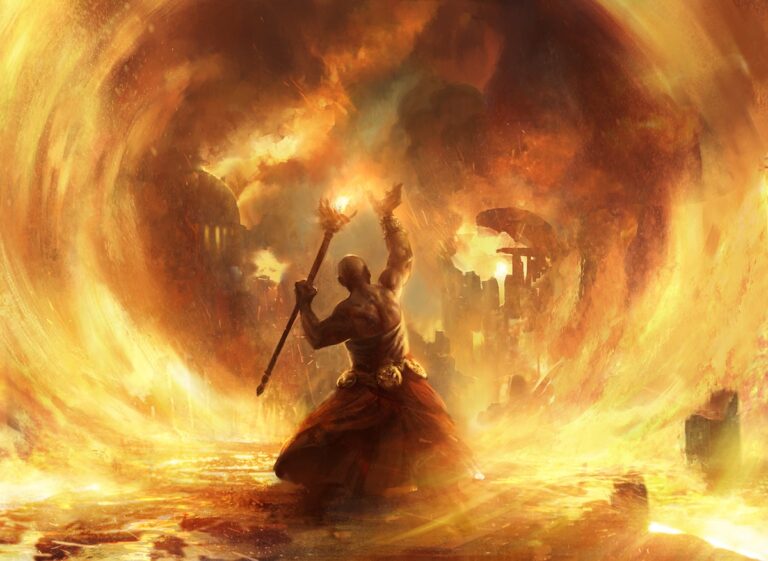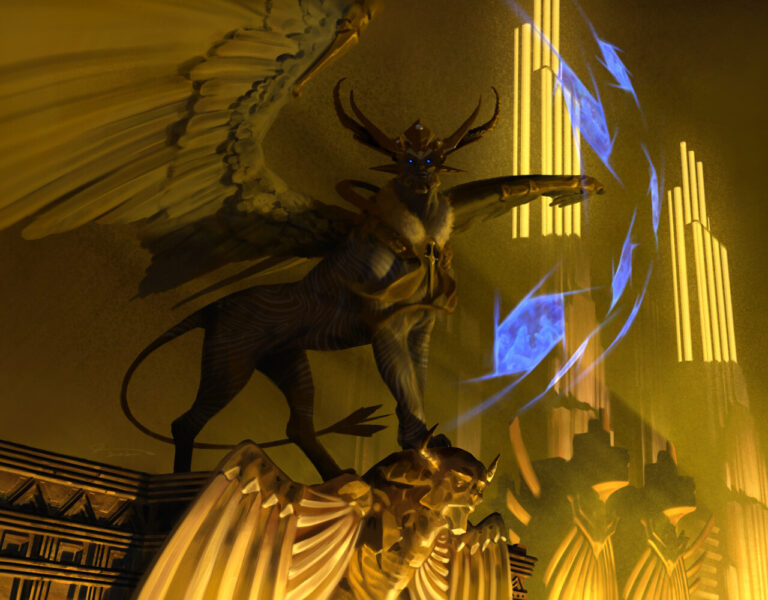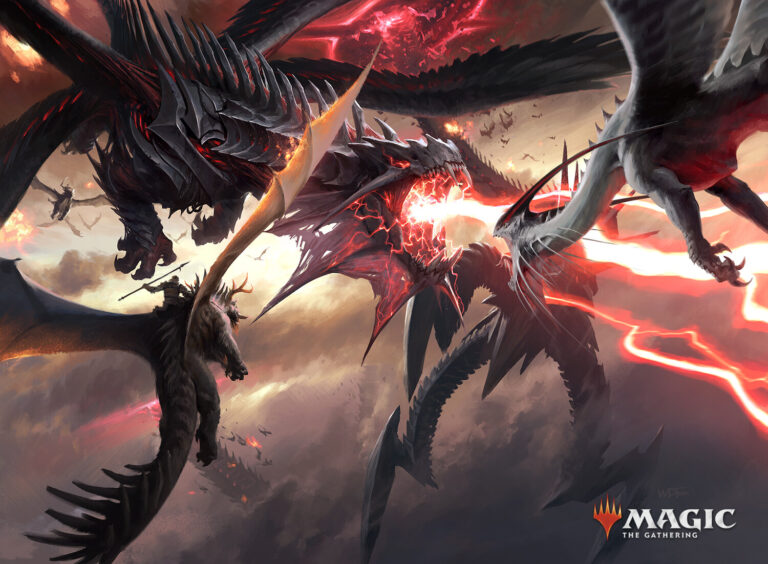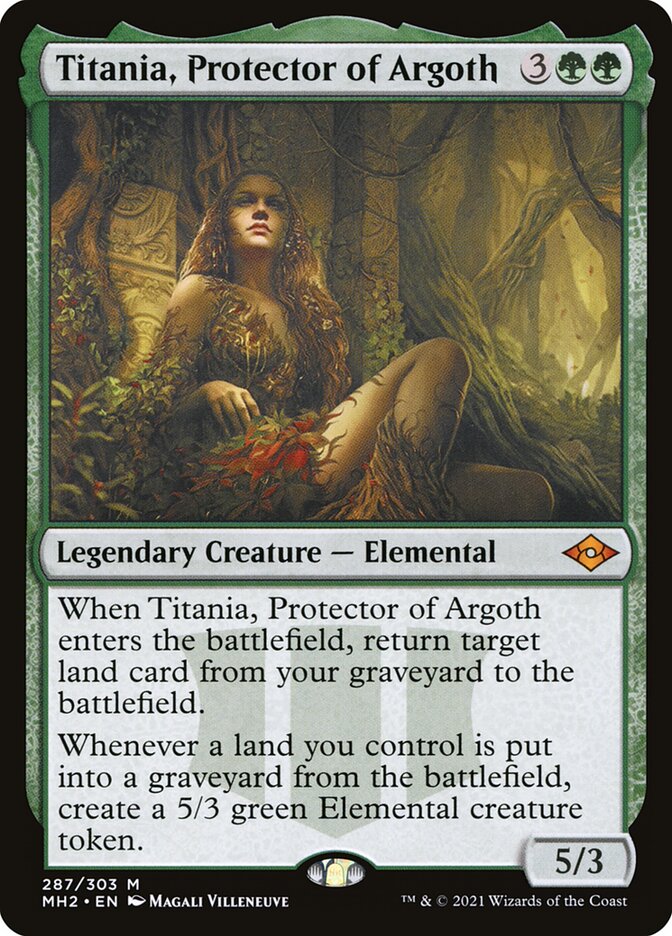
Not long ago, Azusa, Lost but Seeking was a common sight on gaming tables. However, as the years passed and the power level proposed by Wizards of the Coast increased exponentially, a Commander with better body stats and more significant board presence firmly established itself in the Centurion meta: Titania, Protector of Argoth. Unlike Azusa, this Commander offers a slightly less “boring” and more stable strategy, while still delivering top-tier explosiveness.
I’m Andrea Bosco, known as “Re del Commander” on Moxfield. I’ve played various formats, but my main focus is definitely Centurion. I hope this article helps new players and provides critical insights for more experienced ones.
Now, let’s introduce this lady and my decklist.
Deck structure
One of the icons of this color pie, Titania, Protector of Argoth, is a mono-green Commander with a 5-cost mana value. However, thanks to mana dorks and ramps present in various common decklists, she is quite accessible. Titania has a robust body with 5/3 stats and two enticing triggered abilities. The first ability triggers when Titania enters the battlefield, reanimating a target land from your graveyard untapped, creating a considerable board advantage. The second ability triggers whenever one of your lands hits the graveyard, generating a 5/3 Elemental token. The prospects are excellent, but let’s break it down step by step.
The deck’s explosive nature in the early turns makes it particularly dangerous in certain matchups, often playing land, one-drop / land, two-drop and one-drop, or directly three-drop / land. Having Titania, Protector of Argoth on turn 3 along with a potential token, ready to attack by turn 4, with the threat of creating more 5/3, is a significant pressure on any opponent. A strong point is that if Titania reanimates a land, the Commander can likely pay the tax for the next turn, continuously presenting significant aggression through tokens generated from lands hitting the graveyard. This consistent aggression, especially targeting opponent’s lands, leads to favorable matchups since lands are often the weak point of many decks, especially tricolor and four-color variants. However, the main drawback of this color pie is the limited responses available to deal with the opponent’s threats. The primary weaknesses of this strategy are attacks on our lands in the graveyard (see Rest in Peace, Deathrite Shaman or Scavenging Ooze) and simple attacks on our mana dorks that allow the deck to be aggressive. Playing Titania, Protector of Argoth on turn 5, knowing you’re playing mono-green, isn’t entirely reassuring. However, there are scenarios where the Commander becomes highly dangerous, paired with Sylvan Safekeeper and Zuran Orb, potentially creating a good number of 5/3 elementals at the end of the opponent’s turn to swing into combat on your turn.
Gameplan
Top-tier tools include Life from the Loam, which allows impressive resource recovery from the graveyard, and a good number of land tutors to ensure fluid gameplay, the indispensable Crop Rotation (unpredictable and capable of generating a token instantly) and the instant Realms Uncharted (offering good land selection in hand and graveyard). Crucible of Worlds and Ramunap Excavator provide redundancy to the ramp plan (mana advantage), value plan (token advantage), and denial plan (opponent land disruption).
Matchups are varied and unstable, especially depending on the skill level of the opponents.
Aggro
Against aggro, the roll of the die greatly influences the outcome. Titania is fast, fills the board with 5/3 tokens, and generates advantage with lands, eventually entering a loop that should turn the game in our favor. The recursion of lands is excellent, and the combo with Dark Depths, along with life gain from Zuran Orb (ensuring 5/3 tokens rain down), is formidable. Additionally, Glacial Chasm offers peace of mind during darker nights (watch out for land destruction and stack interactions if planning a recursion). However, fast aggression from the opponent combined with targeted removal could cook you perfectly.
Control
Control often suffers from land aggression, as it destabilizes their game plan while generating board pressure. However, the color pie of Titania, Protector of Argoth remains a limitation. As long as you go straight like a train with an unresponsive opponent, Titania poses serious and dangerous threats. But once the opponent lands two or three targeted and effective responses, while mono-green is likely tapped out or simply out of responses, the match can be compromised. The matchup is even, thanks to some mechanics that make this archetype dangerous (Allosaurus Shepherd, Crucible of Worlds/Ramunap Excavator + Wasteland, Hall of Gemstone, Delighted Halfling, Undermountain Adventurer, and the ramp plan in general). Although Titania has some advantages in certain spots, it remains mono-green, with few ways to generate card advantage: hence, some deck-building choices like the inclusion of Outcaster Trailblazer, Garruk’s Uprising to strengthen pieces and occasionally gain card advantage, Tribute to the World Tree (limited, but can provide occasional advantage and better bodies for less impactful pieces), the indispensable Sylvan Library, and Court of Garenbrig (similar to Tribute to the World Tree). The creatures, though smart, are a bit squishy, so attempting to build a board to threaten the opponent’s life might be a grave mistake, especially since control decks have board wipes (Toxic Deluge, Wrath of God, etc.) and more dangerous wipes (like Farewell, which also targets enchantments, artifacts, and even graveyards with lands). Therefore, stay focused on the plan: land aggression, finding pieces to bypass the opponent’s game plan, and board pressure.
Combo
Against combo, it’s a gamble. It largely depends on the type of combo faced. If it’s a full combo deck (thinking of decks like Rograkh, Son of Rohgahh/Tevesh Szat, Doom of Fools, decks based on Doomsday or Jace, Wielder of Mysteries, etc.), Titania isn’t in a good spot, as the denial plan on the opponent’s lands isn’t sufficient (also because many times against bicolor, such aggression isn’t consistent and invasive enough to be a real plan). Moreover, that type of combo, often aided by rituals to bypass mana problems, is faster and can’t be interacted with on the board. However, if the opponent is playing reanimator, the deck has a series of interactions that can exile the opponent’s graveyard (Endurance, Scavenging Ooze, Pit of Offerings… few, but with all the land and green creature tutors, they are easily resolved and especially unexpected, as they can be tutored instantly).
Midrange
Midrange might be the most navigable matchup, as it allows for a good board pressure combined with an inevitable denial plan on the opponent’s lands. Additionally, the 5/3 Elementals created profusely ensure a good stall that can suddenly turn into excellent aggression at the right moments. Beware of certain matchups that like to play on the same notes as Titania, like Soul of Windgrace and The Necrobloom, as their color combinations provide stronger responses and easier access to aggression, aided by black tutors (looking for Scapeshift, for example). However, Titania has faster starts, thanks to various dorks (cheap creatures that generate mana) and ramping, but beware of board wipes. Try not to fall into overboard situations. Nevertheless, reanimating Command Beacon allows for good recursion with the Commander, paired with a 5/3 each turn; against tempo, Titania might suffer from cheap counters, often coupled with other small issues that are hard to manage in mono-green. But generally, the matchup is a race against time, rewarding those who manage the earliest resources and responses best.
Take a mulligan when needed. Keeping a 7-card hand without early explosiveness (especially on turn one) is much worse than a mulligan to 6 or 5 with interesting plays in the first few turns.
Deckbuilding
Undermountain Adventurer is worth playing because in some games, its mere presence can create a significant stall (defending the Undercity), while also providing mana, which is always useful. Rofellos, Llanowar Emissary is notably absent, simply because there aren’t enough forests to justify it. Legolas’s Quick Reflexes is a great card because, besides protecting a creature, it also offers some nice combat tricks. Spatial Contortion provides the hope of occasionally having a small removal option. The colorless mana required shouldn’t be an issue. Concordant Crossroads is a dangerous card. It should be played at the right moment since the opponent could also benefit from it. Scapeshift is included in almost every list, but it’s not necessary. It’s a win-more card that delivers a significant effect only if the Commander is on the board to create many 5/3s and fetch smart lands. However, most of the time, opponents respond to Titania on the stack, making it a potentially weak play. Titania’s Command is also absent for the same reason as Scapeshift. The One Ring is not necessary. The ring is a card suited for decks that propose rather than respond, and Titania is a proactive deck. It also requires a medium-to-long-term plan, which could cost some life points that won’t be easily regained. It’s true that it can be cast quickly, but how often do you need to dig through your deck and take advantage of the extra turn the ring might provide? The deck is structured to consistently and repetitively execute its game plan, turbocharging Titania, Protector of Argoth to aggressively target the opponent’s life total and/or lands. Skullclamp is absent, even though it can be tutored with Urza’s Saga. The only creatures worth equipping are the mana dorks, which no one wants to sacrifice. Disciple of Freyalise and Bridgeworks Battle are untapped lands that contribute to the deck’s strategy. Shifting Woodland is a smart land that allows for interesting interactions with Dark Depths. City of Traitors is indispensable, despite its high cost.
Titania, Protector of Argoth is a medium-difficulty deck that fights hard to carve out a niche for herself and her elementals in the Centurion meta. She handles some arch-nemeses well but struggles against some powerful monsters. It’s a fun deck to play, with beautiful land interactions, constantly seeking to aggressively challenge the opponent. Additionally, it’s an almost budget-friendly deck that can still bring a lot of satisfaction.
Written by
Andrea Bosco

